When you’ve spent most of your life in one place, you tend to take many things for granted – your aging collection of books, for instance, or sharing wardrobes with your sister, or that little bakery down the street that sells your favorite lemon rolls.
Most of all, you take your friends for granted.
In my hometown, Lahore – a sprawling metropolis of 12 million people – it was impossible to be friendless, to sit by yourself in a cafe writing pensively in your diary. No, somebody would find you out and cheerfully plop down on the seat beside you for a catch-up. You just knew so many people.
Where I went to school at UC Berkeley, you plodded through all-nighters in the editing lab with your J-school compatriots, or smuggled bagels from the cafeteria with your International House floormates; at Democracy Now!, you congregated in the kitchen with your like-minded, socially-conscious colleagues from around the world over cups of fair-trade coffee; and in New York City, you wore shalwar kameez and plied yourself with haleem and seekh kabab with the other young Pakistani expats, who invariably materialized every Eid, Independence Day and birthday party at a Curry Hill dhaba.
Things are different when you become an expat
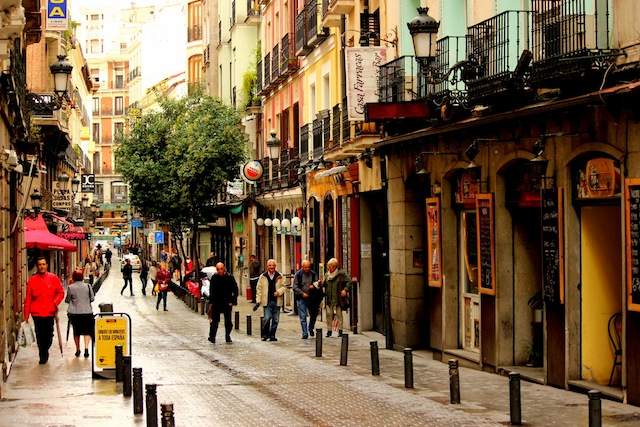
But navigating a new city, adjusting to a new country, fathoming a new language – you were nobody. You knew nobody. You had to start from scratch. Desde cero.
When my husband Zarrar and I landed in Madrid six months ago, we did not know a soul, nor a thing about the city. Sure, it was exciting, but we weren’t just there as tourists, for a few days or a week, staying at a plush downtown hotel, taking the double-decker tour bus to all the monuments and museums, posing for pictures in Plaza Mayor, eating out at TripAdvisor-recommended restaurants, buying flamenco figurines at the souvenir shops, and then happily heading back home.
No, we were there to stay. To make a home. And roaming through the labyrinthine streets of old Madrid during our first week, more than once I got that fluttery feeling in my stomach – I suppose you could call it panic – “How am I going to do this?! Where are we going to live? Where will I buy my groceries? Where will I find my turmeric and green chilies and Shan masalas? Where on earth can I buy bathroom slippers, a 7-Watt light bulb, square-shaped tupperware, 16′′x16′′ cushion fillings, hummus and baking powder, apart from the ludicrously-priced El Corte Ingles?”
And roaming through the labyrinthine streets of old Madrid during our first week, more than once I got that fluttery feeling in my stomach – I suppose you could call it panic – ‘How am I going to do this?’
Which cell phone package has the cheapest local rates? Which internet service provider has the least hidden costs? How do I apply for a monthly metro pass? What do I do if I lose my monthly metro pass? What do I do if I get robbed! (Incidentally, these are not hypothetical questions)
Most important of all, how was I supposed to make friends?
I couldn’t enroll at a university – the Arts & Humanities courses I was interested in were all taught in Spanish – nor did I have the right visa for a “real” job. My level of Spanish was too low to even apply for a volunteer gig. How was I ever going to meet people and engage in a longer-than-five-minute conversation with anybody, apart from my husband and the Carrefour checkout lady?
I could become a hermit, pottering about the house in a white robe, watering my herbs, sipping ginger tea and people-watching from the balcony.
Faced with these sundry, seemingly insurmountable challenges, I could let myself sink into despair. I could become a hermit, pottering about the house in a white robe, watering my herbs, sipping ginger tea and people-watching from the balcony. I could also live quite a gregarious virtual life, through Facebook, Skype, What’s App, Viber. There were just so many options.
But I had a plan. The location was Madrid, and the objective, Friends, those slippery creatures that every new immigrant, expat or long-term traveler craves.
Here, I share with you some of the strategies I adopted to achieve this elusive goal.
Tip #1: Join a language school

This may seem like an obvious thing to do if you move to a country where you don’t speak the local language (and no, ordering a burger or asking where the bathroom is does not count), especially if you plan to stay there for a couple of months or more.
But many expats prefer to muddle through daily life with vernacular scraps, picked up in various situations and locations, and, needless to say, grammatically atrocious. Coupled with histrionic gestures and deliberately choppy English, they manage to make themselves almost perfectly understood.
“I-go-mercado, para shopping.”
“Me gusta this movie. It is muy bien.”
“Tiene scissors, chop-chop?”
The real barrier, though, is the cost of learning a language. Reputable language schools promise you many grand things – “Speak Spanish like a native in just six weeks! Three months to your dream job as a parasailing instructor in sun-filled Majorca! Looking for love in Spain? Let us teach you the language of loveee!” But they also require you to dig deep into your pockets for the bargain, which most of us shoestring itinerants cannot afford to do.
However, thanks to their unmissable advertisements in the metro, I discovered C. E. E. Idiomas, a language school in Madrid that was reasonably-priced, and a five-minute walk from where we lived, near Puerta del Sol.
But language schools also require you to dig deep into your pockets for the bargain, which most of us shoestring itinerants cannot afford to do.
My first day of class I was terribly excited. I’ve always been a bit of a nerd, and I loved going to school as a kid. So I picked out a crisp new cotton tunic, slipped on my favorite orange flats, tossed a purple notebook into my Democracy Now! tote bag, and set off bouncing along to class. I wasn’t going to C.E.E. Idiomas only to learn Spanish. I was friend-hunting.
Unfortunately, my dream of finding a kindred spirit, waiting for me in the classroom – darkish hair, fairly tall, not unlike myself, whom I would then proceed to hug, and demand, “Where have you been all this time?” – did not quite materialize. None of the students were the right fit. Some were too old (grandmother), some were too young (just out of high school), some had too many responsibilities (committed housewife, mother of two school-goers), and some were just too foreign (Kentucky, U.S.A.?). There was only so much we could share or talk about.
Still, peeling off my pajamas and going to class everyday in the fresh morning air, interacting with corporal human beings apart from my husband and the Carrefour lady was admittedly very pleasant.
Still, peeling off my pajamas and going to class everyday in the fresh morning air, interacting with corporal human beings apart from my husband and the Carrefour lady was admittedly very pleasant. Plus, our Spanish teacher was an absolute riot, and we spent most of the hour laughing at her self-deprecating jokes, though we didn’t understand half of what was being said. I was learning quite a lot, too, very useful and practical things (for example, the important distinction between ojo, eye, and ajo, garlic, which I had confused more than once at the grocery store: “Tiene salsa de ojo?” Do you have eye sauce?). And – how can I deny it – I loved being back in school!
Tip #2: Join a recreational class
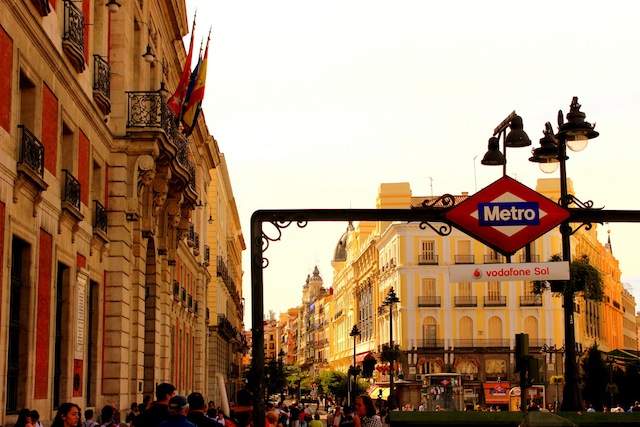
When you’re not a full-time student, nor do you have a “real” job, nor any family in the city where you live, you end up with a lot of free time on your hands – which can be perfectly utilized by learning something you’ve always wanted to do, but never really got a chance to. For instance, crocheting, or Thai kickboxing. Sushi-making, or calligraphy, ventriloquism, or, better yet, magic.
That something for me right now is Middle Eastern dancing. I carry my black coin-belt around with me wherever we go, and Google a dance class in whichever city we happen to be in. Apart from the fact that I love to do it, it’s also a good way of meeting people – perhaps even a potential friend, whom you are assured of having at least one thing in common with.
So, with all this in mind, I joined a classical Egyptian dance class in Madrid, taught by a half-Egyptian, half-Paraguayan, Spanish-born woman called Yasmina, who has been dancing professionally for 20 years.
On my first day, I arrived late. I had gotten confused when exiting the metro station and walked in the wrong direction for a good ten minutes. “Darn it,” I thought, when I realized my mistake. “There’s no point of going to the class now. There won’t be any space for me!”
I was envisaging, of course, the type of dance classes I had attended in Berkeley and New York; a normally tiny, square-shaped room packed to the seams with a variety of serious-faced girls in intimidating-looking leotards; the teacher (whom you could barely see) hollering instructions, bootcamp-style, over the pounding music; and me in the back row, whacking my hands into the wall every time we did snake arms, or getting trampled on by Rubber Girl next to me at every grapevine turn.
But here, when I scrambled into class, huffing and puffing, with a “Lo siento-ooo!”, I’m sorry-yyy, on my lips, I was shocked to find myself in a 60 ft x 30 ft, hardwood-floored room, glistening mirrors on not one but three sides, nicely framed posters on the cool blue walls, and Yasmina the teacher with two students – dressed in comfy track pants and T-shirts – quietly doing some stretches.
“Is the class already over?? Has everybody left??” I asked, bewildered.
No, they were just about to start! “Solo nosotras,” Yasmina smiled, flicking on the music. I couldn’t believe it! What joy! What pleasure! What a wonderful feeling to sway about freely my unusually long limbs without colliding into brick or body part at every move!
There were even times when the other two students didn’t show up, and it was just me and the teacher, whom I could pester with complaints and questions to my heart’s content (“But why can’t I do the sideways shimmy? Why? Why doesn’t it look as good as yours?”) On the downside, nobody in the class, including the teacher, spoke any English, so we had to suffice in our communication with gestures, intonation, and a range of facial expressions. The other girl in the class who was my age seemed nice, but I could not glean much about her from my limited Spanish and her non-existent English save that she worked at a pharmacy, loved leopard print and Khaled.
On the upside, one of the first things I mastered in the Spanish language were parts parts of the body – rodilla, tobillo, talón, cadera, codo, muñeca, cuello – much to my Spanish teacher’s amazement when we came to study that chapter in class. You bet, I knew those body parts like a doctor. I became known amongst the nice ladies at the dance school as the funny “American” girl (because I spoke English!) who laughed a lot, seemed genuinely excited to be in Spain (unlike the Spaniards themselves, who were desperate to leave), and who continually invented new ways to bungle their language – which they graciously continued to ignore!
Tip #3: Attend meetup events and activities

Meetup.com is a New York-based social networking site – the predecessor of Facebook – for people who don’t know each other. You create a profile, put up a photo, answer a few questions about yourself, and then join local groups centered around various activities. For example, Yoga in the Park. Salsa Lovers. American Expats. Friday at the Movies. Knitting Addicts.
After that, you are invited to the group’s regularly organized events, where you are meant to go, meet new people, talk, dance, knit or watch a movie together, and generally have a good time.
Now I had never used Meetup before and was initially skeptical. I imagined a virtual community of balding, lonely, middle-aged men, typing up philosophical treatises in the “About Me” section, posting 90s-era denim jacket-clad photos on their profile page, leaving chirpy “Welcome” messages to new female members of the “Sightseeing in Madrid” group, all on the innocent pretext of making friends…
Not that I have anything against middle-aged men (and I actually love denim jackets). But I suppose that TV series like The X files, and countless other murder-mystery spinoffs had inculcated in me a certain amount of prejudice against the online mid-lifer (remember 2Shy?).
I imagined a virtual community of balding, lonely, middle-aged men, typing up philosophical treatises in the “About Me” section, posting 90s-era denim jacket-clad photos on their profile page, leaving chirpy “Welcome” messages to new female members of the “Sightseeing in Madrid” group, all on the innocent pretext of making friends…
However, my husband Zarrar was a firm believer in the “Meetup” way (which was certainly vindicating, coming from a self-confessed social media-phobe). So I decided to give it a go. It’s not like I was going to meet anyone alone, so how bad could it possibly be?
The first Meetup I went to was benignly titled “Coffee & Croissants” and took place on a Saturday afternoon at an upmarket cafe in Salamanca, one of the poshest barrios of Madrid.
I wasn’t crazy about the location, personally preferring the narrow, cobbled streets of Centro and its cozy, tile-floored cafes – but as I stepped out of the metro station and made my way towards the venue, I was excited. I had a good feeling about this! I bet I would meet some really fun, interesting people – maybe even someone who, like me, was new in the city, spoke English, and enjoyed a good game of Pictionary? Maybe I was finally going to meet that elusive best friend?
But when I arrived at the cafe, and located the Meetup group – thirty individuals whom I did not know from Adam, seated along a table that had no visible end – and when thirty pairs of strange eyes simultaneously turned to fix their gaze on me, the “late” newcomer – I admit, my first impulse was to take flight.
“No, that’s the wrong attitude, M,” I told myself, as I met the group organizer with a slightly forced smile and a peck on each cheek, Spanish-style, taking an empty seat somewhere in the middle of that interminable, Alice-in-Wonderland table.
“You mustn’t flee.You mustn’t be a coward. You must stay on and fight!”
So I stayed, ordered a cafe con leche, and looked around to start a conversation with the person sitting next to me. As luck would have it, that person was a Spanish man – a middle-aged Spanish man. Not balding, probably a bit lonely, and with an almost imperceptible whiff of sleaze about him (my Sleaze Radar is exceptionally strong).
After the initial perfunctory exchanges – “Hello, What’s your name? Where are you from? What do you do? Do you like Madrid? Who are you?” – there was an awkward pause. I grabbed my coffee cup and sipped it politely. I tried to spot another, more wholesome person to talk to, but everybody around me was already engaged in loud and animated conversation, much to my annoyance.
“Soooo,” Somewhat Sleazy Spanish Uncle smiled, revealing yellow, cigarette-stained teeth. He drummed his long, thin fingers on the table, rummaging through his brain for a subject to expound upon – and then he hit the gold mine.
“You are Muslim, yes?”
“Um, yes.”
“Do you pray five times a day?”
“Um, what? No, not five times…though I should…”
“Have you been to the Madrid Central Mosque?”
“Um, no.”
“Do you keep all the Ramadan fasts?” he continued relentlessly.
“No, not all…though I should…”
“Are you vegetarian?”
“Um, no…I just don’t eat pork…”
“But why don’t you, you know,” he vigorously traced an invisible hijab around his face, “wear a veil?”
I’m sorry, was this supposed to a casual chat over coffee, or the Spanish Inquisition???
However, I persevered, civilly, blaming the Spanish Uncle’s “non-PC” questions partially on curiosity, partially on ignorance, while in my head I planned the nearest and quickest exit to this social torture.
Just then, from the corner of my eye, I espied an unmistakably South Asian face, complete with shiny black mustache, get up determinedly from his chair at the other end of the table, and make a beeline towards – me!
More tiresome pigeonholing was to follow.
“So, you are from Pakistan, no?” He parked himself beside my chair, flashing a set of remarkably straight, white teeth.
“Yes…” I knew exactly how this conversation would progress.
“So you speak Hindi?”
“Urdu. It’s almost the same thing…”
“So you watch Bollywood?”
“Sometimes, yes.” I looked at the time on my cell phone.
“So you like Indian food?”
“Pakistani food. It’s quite similar…”
“So you watch cricket?”
That was it. The limits of my endurance had been reached. I could not, would not talk about cricket, the masochistic national obsession of Pakistan, and the most boring sport in the world next to golf!
It was time to employ my failsafe excuse to wriggle out of unwanted social situations: “I’m sorry, I really have to go. My (fearsome Pakistani) husband is waiting for me at home…”
So, with another twiddle on my cell phone, I said a few hurried goodbyes (no more cheek-to-cheek kisses), and, ignoring the event organizer’s accusatory tone – “You’re leaving already?” – I dashed out of “Coffee & Croissants” and Salamanca, never to return. From behind me, I heard my desi friend’s voice plaintively call out, “Wait, are you sure you don’t want to stay? I brought Pictionary!”
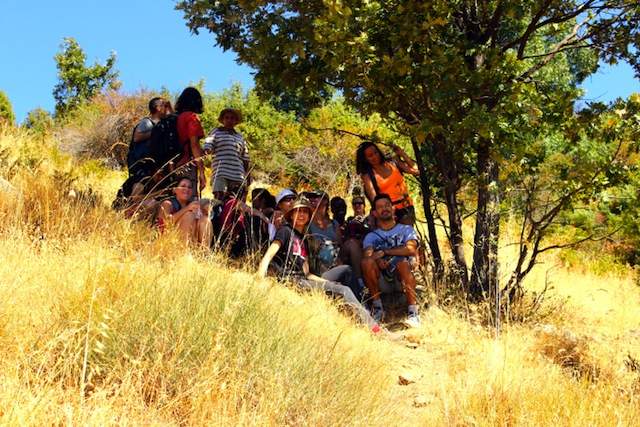
Of course, not all my Meetup experiences were quite as agonizing as the above-mentioned 2 hours. Zarrar and I found one terrific Madrid-based group called “Sporty People”, which organized outdoor activities in and around the city over holidays and weekends. We went hiking with Sporty People to Zarzalejo, a picturesque pueblo just outside Madrid in the Sierra Oueste. We picked mushrooms with them in the beautiful, fall-colored forests of El Tiemblo. Lunch would be a turkey or tortilla sandwich, with trail mix, fruit and a little carton of juice, partaken on a grassy field or under a tree with wonderful, diverse company – a veterinarian from Brazil, a yoga instructor from Scotland, a tour planner from South Africa, a professional chef from Spain, and a cheerful medley of ESL teachers from America and England, whom we shared some memorable laugh-and-talk with.
I am now also a believer in Meetup – we’ve attended several events and met some lovely people, a few of whom we have kept in touch with.
The group organizer was a splendidly suntanned Madrileña, who, like me, had studied to be a journalist, and who had recently quit her job at a well-known international NGO to manage her own adventure travel company, which I also hoped to do one day.
So I am now also a believer in Meetup – we’ve attended several events and met some lovely people, a few of whom we have kept in touch with. But I’ve learnt to steer clear of events that involve sitting around a table with absolute strangers – brunch, lunch, coffee, tea, poetry recitations, philosophical discussions, or even board games (sigh) – especially those that my mustachioed South Asian friend or the creepy Spanish Uncle happen to have RSVPd!
Tip #4: Language Exchange
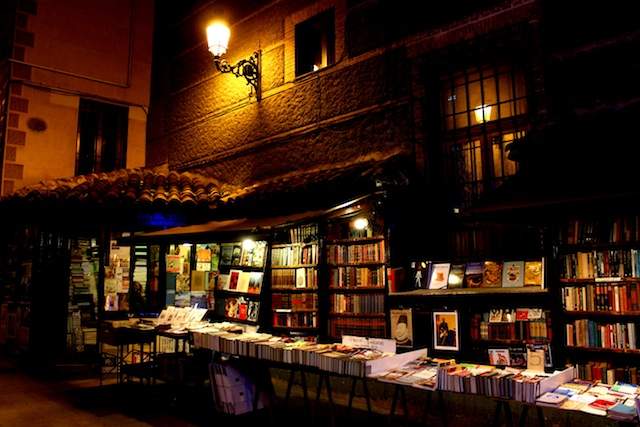
Language exchange, or intercambio, is a popular (and free) method of learning languages in Spain. There was a plethora, a veritable sea of Spaniards out there, my Spanish teacher told me, who were desperate to find a sympathetic English-speaker to practice their hesitant conversational skills with. English is taught in Spanish schools as an optional second language, but in the most pedantic way possible, so that somebody who has “studied” English for over 10 years can barely formulate a coherent reply to “Hi, what’s up?”
Intercambio sounded like the perfect arrangement for me. Not only would it help my Spanish, I would also have somebody to chat with over a cup of coffee – that nameless, shadowy, friend-like figure I wanted so badly in Madrid! All I had to do was find that somebody…
Not only would it help my Spanish, I would also have somebody to chat with over a cup of coffee – that nameless, shadowy, friend-like figure I wanted so badly in Madrid!
I immediately set to work. I went to tusclasesparticulares.com, created a profile, and posted an anuncio, an ad, stating my particulars in a cheerful, casual tone, and offering my stupendous English-speaking ability in exchange for un poco ayuda with my abysmal Spanish. We could meet in a cafe, or a park, como tu prefieres. I enjoyed photography, and writing, and meeting new people. Hoped to hear from you soon!
It almost felt like online dating. I went to bed that night with a flutter of excitement in my heart. Who would read my ad? Who would reply? Would I like them?
But nothing could have prepared me for the deluge of emails I found in my inbox the next morning; messages from men and women of all ages, all walks of life, from the city of Madrid and beyond, asking for my hand as their intercambio partner.
I was terribly flattered – and a bit overwhelmed. There were just too many fish in the sea. I needed to focus, start being selective, separate the wheat from the chaff, as they say. So began Step 2 of the intercambio-partner-hunt: carefully reading every applicant’s email to divine something about their personality (Does she sound too serious? Does he sound sleazy?), stalking them on Facebook and Twitter, examining any photos that turned up. Some applications were discarded immediately; for example, the 38 year-old pianist who sent me a tea-stained studio portrait of himself in a brown fedora and brown tweed suit, or the 18-year old Economics student whose entire album of Facebook profile pictures consisted of duck-faced selfies.
After I had completed the first shortlist, I sent an email to each selected “applicant,” requesting, somewhat discreetly, a 200-word personal statement: “So, what do you do? What have you studied? What are your hobbies? I think it’s important, for a successful intercambio, that we share some interests, don’t you agree?”
When the replies started coming in, I made a second shortlist. Emails that included the words books, languages, cinema, outdoors, museums, and dogs, for instance, were directed to the “Yes” folder, while emails with the words motorbikes, shopping, clubbing, and pop music were immediately relegated to the “Rejects” folder (no offense meant to motorbike aficionados, mallcrawlers and Katy Perry fans, it’s just that, I wouldn’t know what to say to you!).
Now came the hard part: the actual, face-to-face meeting. I made appointments with the final 10 candidates, to meet them at a public square or coffee shop – blind dates, really. We barely had any idea of what the other person even looked like. And anyone who has been on a blind date will know that the first meeting was absolutely crucial. It could make or break the budding relationship. Either you liked the person, or you didn’t. Either you wanted to see that person again, or you didn’t.
But with some people, it just clicked. Conversation flowed naturally, there was laughter on both sides, and you were perfectly at ease after the first five minutes.
Sure, I had my share of disappointing dates. Some people, intimidatingly interesting on paper, were plain boring in real life. Some people lacked energy or enthusiasm (for which I always tended to overcompensate, resulting in the peculiar condition know as the “laughing headache”), and some people just didn’t speak. In these cases, I found “disappearance” to be the best way to politely end things. In other cases, I was forced to lie: “I’m sorry, I’ve found a job as a dogwalker and don’t have time to do intercambio anymore!”
But with some people, it just clicked. Conversation flowed naturally, there was laughter on both sides, and you were perfectly at ease after the first five minutes. I met a medley of memorable characters – a lawyer, a psychologist, a biochemist, an astrophysicist – all more or less my age, warm, open-minded, hardworking people from different parts of Spain, who somehow found time to meet me for intercambio in their 10-hour work days. Finally, I could stop! Stop the endless virtual interviews, the awkward blind dates, the cruel but inevitable rejections!
It is something that happens always with expats – maybe out of the boldness that comes with being a foreigner, or maybe out of our intrinsic need to trust, to talk, to confide in a palpable human being, in a place where there are no givens, where we must build our life up from the ground.
So has language exchange made me fluent in Spanish? No. Has my Spanish improved? I’d like to think so, yes. But more importantly, I’ve found Spanish friends, and through them, a connection to my adopted home. They tell me their views on love, marriage, family, religion, politics, and I share with them my experiences growing up in Pakistan and living in the United States, two completely different worlds about which they are equally curious.
It’s strange how two people, complete strangers in one moment, can go to speaking about their personal lives with the air of old friends in the next. It is something that happens always with expats – maybe out of the boldness that comes with being a foreigner, or maybe out of our intrinsic need to trust, to talk, to confide in a palpable human being, in a place where there are no givens, where we must build our life up from the ground.
Tip #5: No te preocupes! Don’t worry! Let the universe do its thing!
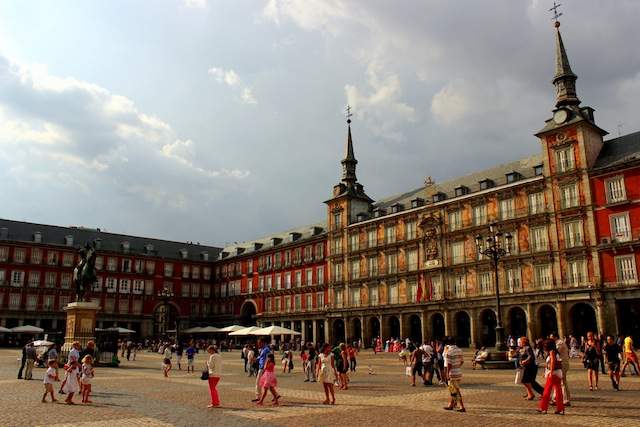
This is something I’ve learnt along the course of my somewhat peripatetic life the past 6 years: sometimes people (and opportunities) fall into your lap in the most unexpected, unlooked for way, and these congenial little windfalls may be the best things that happen to you in your new home.
I remember a certain day in Ithaca, New York, where my husband and I had moved right after getting married. Zarrar was in class at Cornell, and I was busy cleaning, unpacking and “nesting” in our new apartment, a ground-floor portion of a typical East Coast colonial house, when our gritty old landlord Carl ambled up to the front door, dressed in his customary red plaid shirt and classic blue jeans.
“Hey there!” Carl hollered, “I wanted to introduce you to these nice folks,” he gestured towards the smiling young couple that followed him. “They’ve just moved to Ithaca from Mexico and are thinking of renting from me as well!”
That was the first time I met Elsa and Silvano. Though we only spoke for five minutes, standing in the porch of Carl’s yellow-painted dollhouse, and though they didn’t end up renting from him after all, they became our closest companions the 9 months we spent in Ithaca, and we still count them among our dearest friends.
It takes time for a plant to adjust to new soil, a new atmosphere. But once it gets over the wilting, drooping, moping period – ‘transplant shock’ in botanical terms – it thrives.
So just like that, someone may chance to cross your path, and you’ll hit it off with them like you never imagined. Maybe a friend of a friend puts you in touch with somebody they know who happens to live in the same city, and you turn out to be kindred spirits, Anne of Green Gables-style. Or maybe another like-minded soul, going through the same experiences as you, discovers you and contacts you through your blog!
My advice to you
If you ever find yourself lost, alone, and friendless in a new city, wondering why on God’s earth you ever transplanted yourself in the first place, don’t worry! It takes time for a plant to adjust to new soil, a new atmosphere. But once it gets over the wilting, drooping, moping period – “transplant shock” in botanical terms – it thrives. Just like my mint plant on the balcony, which transformed from a sad little shrub to mean-green-beanstalk literally overnight. Now it’s threatening to take over the entire jardinera. Mint lemonade, anyone?
Read more about making connections with others:
- Make Meaningful Connections
- Is Meeting People the Best Part of Travel?
- The People You Meet While Traveling
- Picking Up a Hitchhiker
What tips do you have for meeting people on the road?
